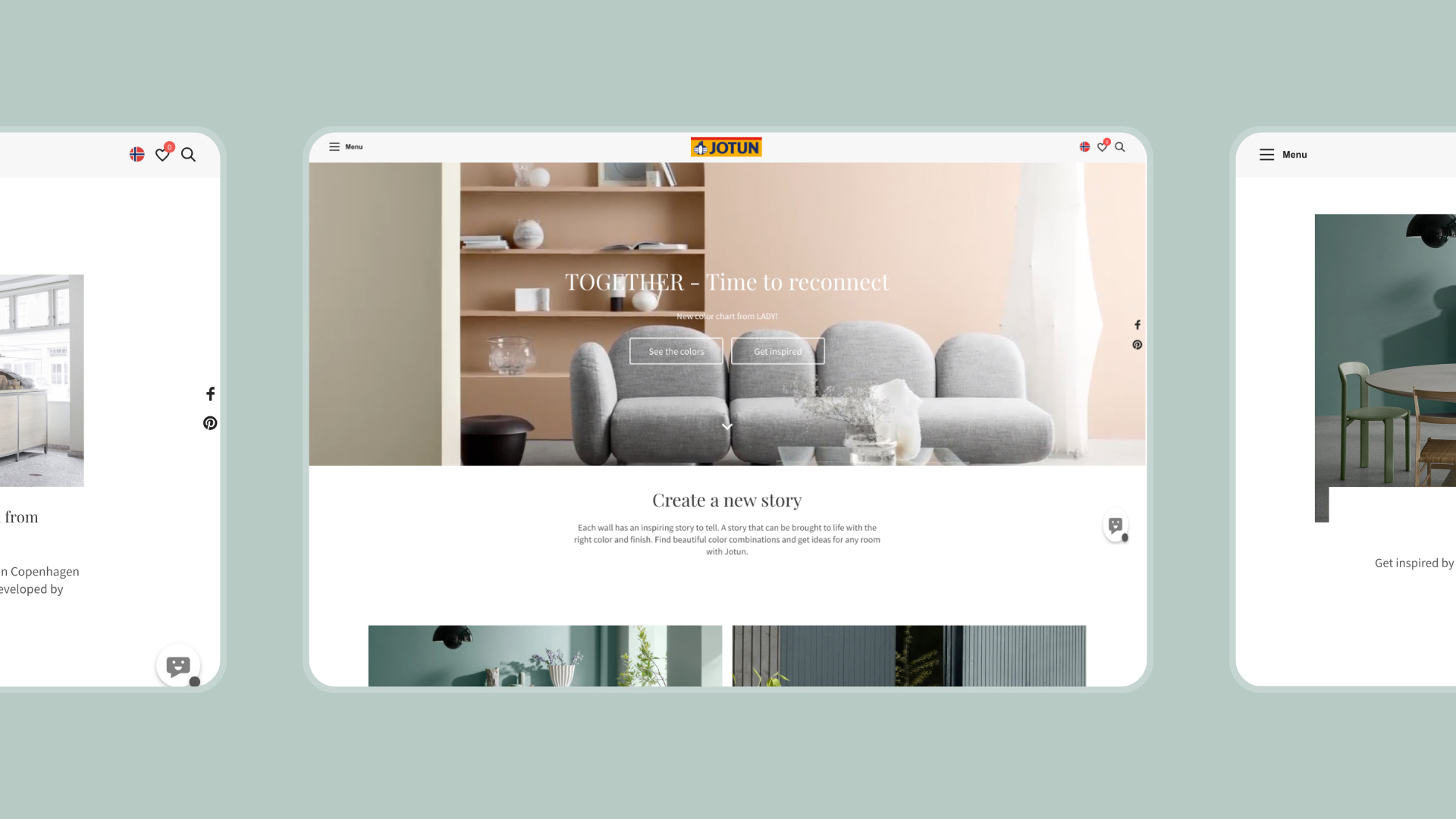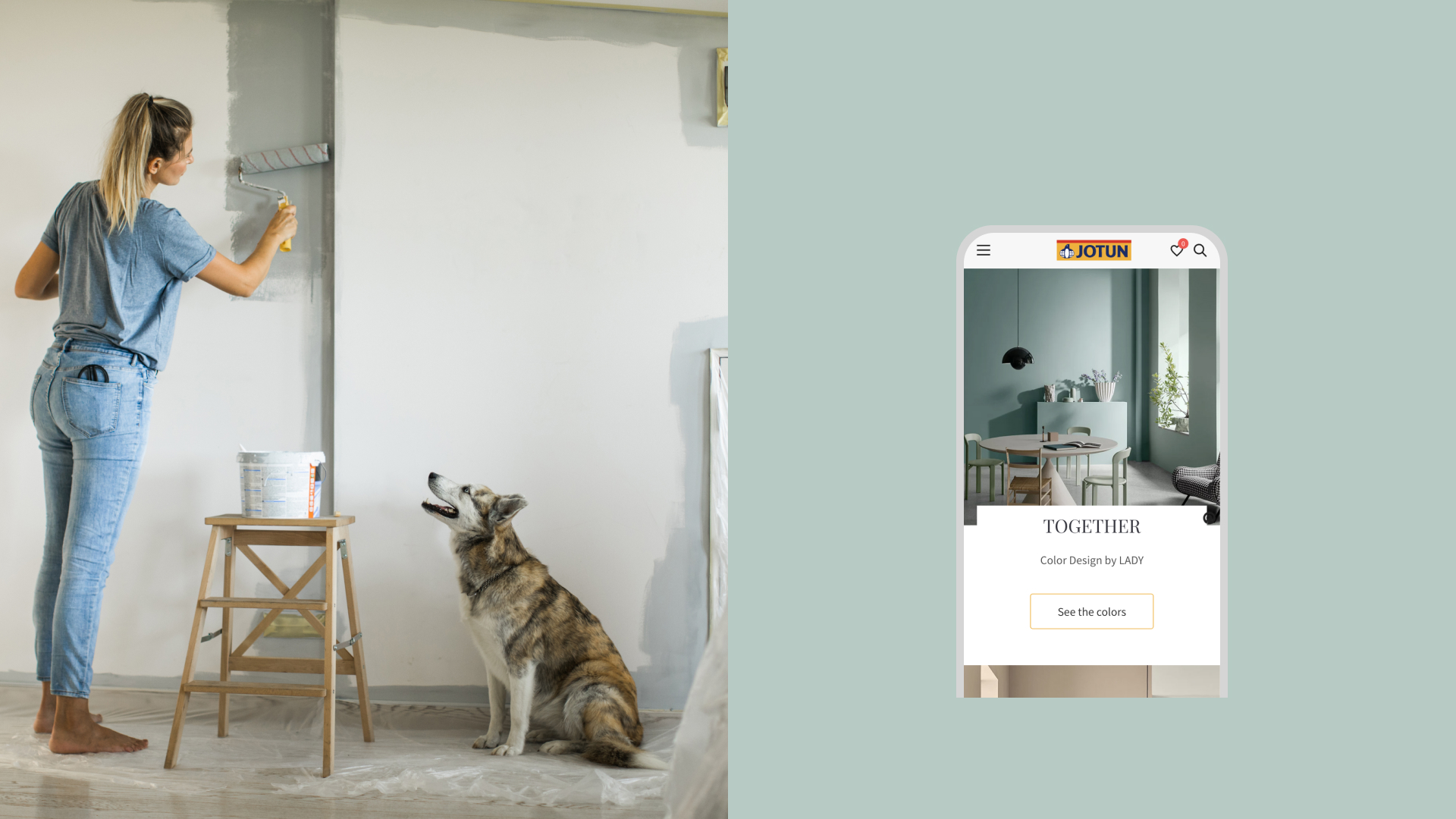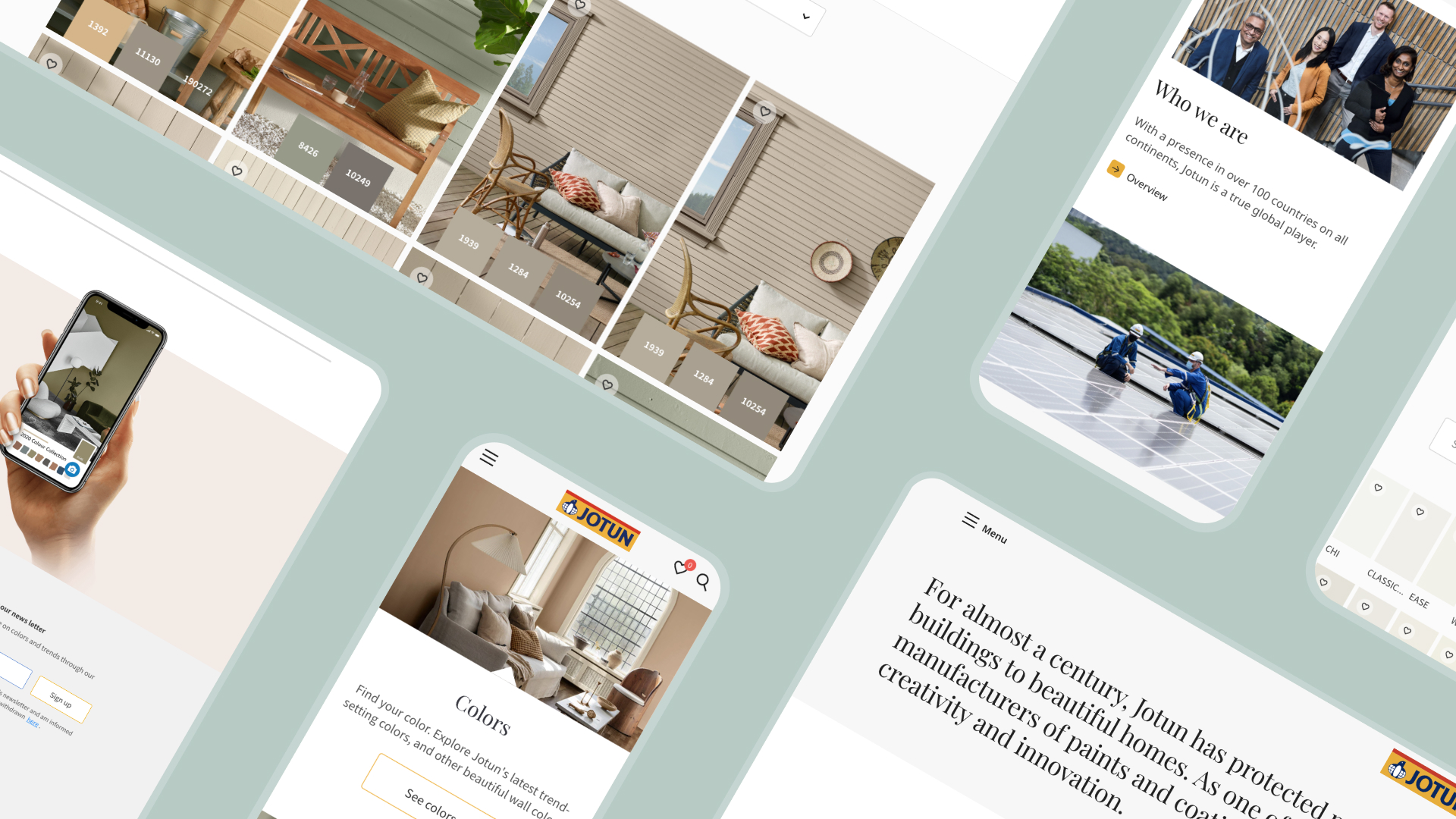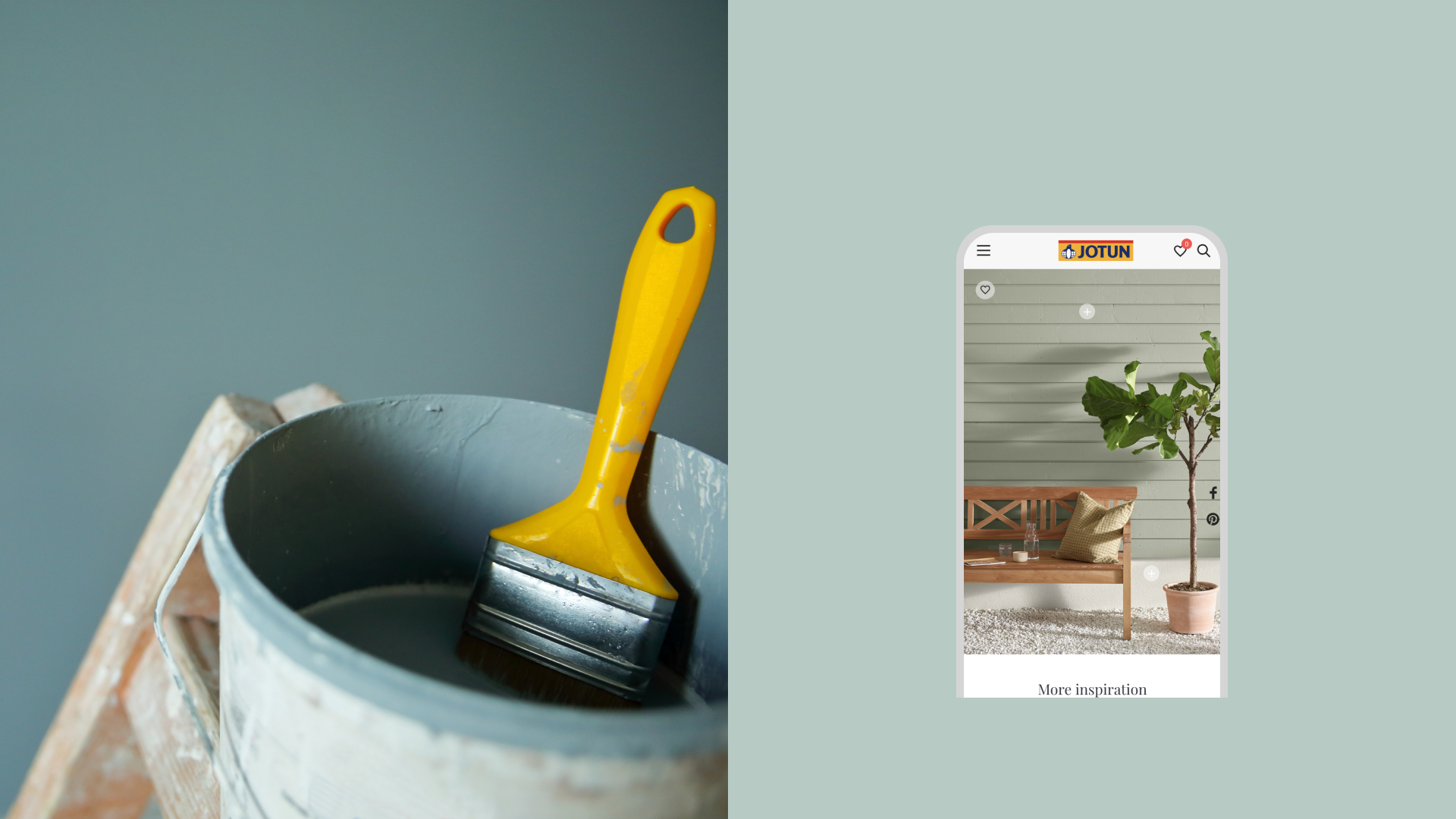
Headquartered in Norway and represented in more than 100 countries, Jotun is a global paint manufacturing company that specialises in decorative, marine, protective and powder coatings. The £1.94 billion turnover company operates 38 production facilities and 67 companies across the world. The team turned to DEPT® to advise on CMS selection and migrate all 91 variations of its B2B and B2C websites, including more than 60,000 pages, to a new Optimizely solution.

Scoping the challenge
As a global manufacturer of paint products for both the industrial and home segments, Jotun has distinct B2B and B2C sites with radically different purposes and requirements. The primary purpose of the consumer site is to provide inspiration and stimulate in-store demand, which is done through beautiful imagery, interactivity and design ideas, supported by practical guidance such as product information and how-to guides.
Jotun’s trade site serves as a customer portal where dealers and distributors can log in to access personalised tools, product and technical information to expand their knowledge of Jotun products and accelerate their own business operations. Products, tools and content are dynamically displayed to individual users relevant to their sector, as well as personalised messaging and account information.
The aim of the project was to source a new technology solution and migrate all 91 (and increasing) country and language versions of the B2C and B2B sites within 12 months.

Finding a future ready solution
With wide ranging requirements and defined future plans, Jotun needed to migrate to a truly versatile, future-ready solution. Following a thorough analysis of the company’s current and upcoming requirements, an in-depth platform comparison and proof-of-concept review, Jotun identified Optimizely as the optimal platform to meet their needs.
While the existing B2B and B2C platforms had been built on the SDL Tridion CMS, Optimizely’s DXP (digital experience platform) provided the flexibility and opportunity for Jotun to accelerate its digital capabilities in the future.
As well as providing an improved CMS editor experience, the DXP has strong content and commerce offerings that the team could utilise to lay the foundations for Jotun’s future website improvements. The platform also handles multiple websites and languages with ease, and provides a range of hosting options, including fully managed cloud with Microsoft Azure, to help minimise overhead for the internal IT teams.

Discovery deep dive
Having worked with Jotun since 2016 to build its existing platforms, DEPT® understood the complexity of the business and its goals. DEPT® is also an expert in developing large scale content management solutions, making the team well placed to not only consult Jotun on the optimum CMS choice, but to manage the complex migration.
Although DEPT® was already familiar with Jotun’s digital operations, the discovery phase was essential to fully understand the current landscape, authoring needs, non-functional requirements, and determine the technology architecture and integrations required for the future state.
Through a range of workshops, we conducted a page and component audit to understand and document all templates, features and functions. This helped us to understand where and how often they were used across the sites and informed the new technical specification.
We reviewed SEO to develop a specific migration strategy that would ensure no equity was lost, as well as analytics to understand requirements of the new sites and ensure all tagging specification was integrated ahead of the live date. We also ran sessions with end users so that we could recreate what they liked about the existing set up, and remedy elements that they found frustrating.

Architecting a flexible technical solution
Once the existing landscape and future needs had been fully reviewed within discovery, DEPT®’s technical experts were in a position to architect the optimum solution to meet all security and non-functional requirements. To form the basis of the build, they produced a specification to detail all of the required elements, the approach to each, and the overall technical approach.
The project was somewhat simplified by the fact that we had initially architected both the B2B and B2C solutions in a headless fashion, utilising React.JS for the front end and SDL Tridion for the back end. Having the front and back ends decoupled in this way meant we could proceed with the CMS migration with little work to the React application, integrating Optimizely via an abstracted API layer.
Maximising functionality

Complex content migration
Through DEPT®’s in-depth approach to discovery, where its content specialists had direct access to the existing CMS, conducted visual reviews, and discussed needs with content editors, the team had a strong grasp of content needs to develop an effective migration plan.
When it came to the main task at hand, content migration, one of the main challenges we identified during the discovery phase was that SDL Tridion is a component based system, allowing editors to build pages from a range of components, whereas Optimizely is a page based solution, where editors can add/amend content on pre-built page templates.
Content migration is already the riskiest phase and the one most likely to cause delay, particularly when handling the page volume that Jotun has; but this added an extra layer of difficulty, as regional sites often had vastly different page layouts for the same page type on the global site, making automation of page migration almost impossible without major error.
Through a series of content audits, our specialists identified more than 35 page templates and +100 components that had been used without standardisation across different market sites. To ensure the effective migration of the 35 templates across all pages, we first implemented a tiering system to identify the highest-lowest value pages, and therefore highest-lowest risk pages, depending on the structural complexity and prominence of the page.
From here, we were able to identify nine page formats that were being used most consistently across the vast majority of the 60,000 pages, where we could run automated scripts to test for any variances in page structure and migrate these lower risk pages. The remaining, higher risk, pages, of which there were around 800, were manually reviewed and migrated by DEPT® and Jotun’s content editors.
DEPT® quickly became embedded in Jotun’s marketing team and experts on its content management. Our specialists delivered more than 20 training sessions to Jotun’s content editors in regional offices across the world, to ensure a smooth transition to the new CMS.
Results
DEPT® is proud of the part it is playing in Jotun’s digital journey. After the successful migration of all 91 sites and 60,000 pages from SDL Tridion to Optimizely, Jotun’s new digital architecture is more efficient and effective for both internal and external users. Greater standardisation across sites adds strength to the brand, and the foundations have been laid to accelerate Jotun’s digital activity in the months and years ahead.
Questions?
Managing Director UK
Brian Robinson
Discover more


